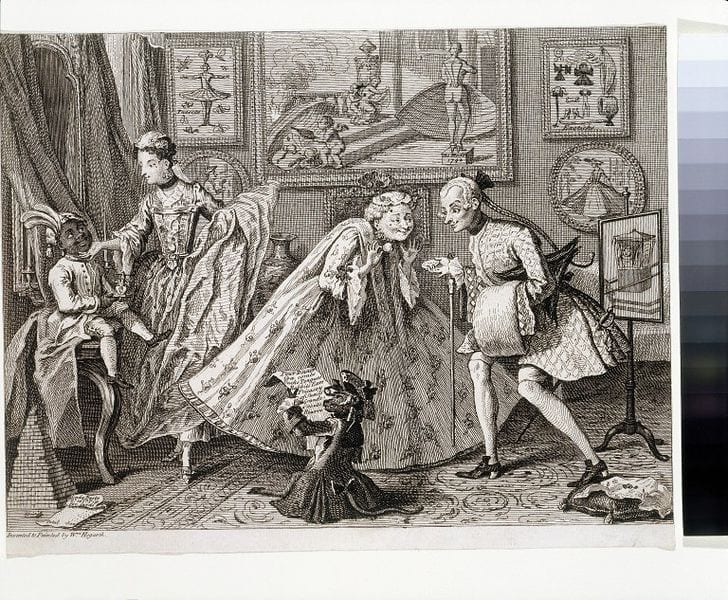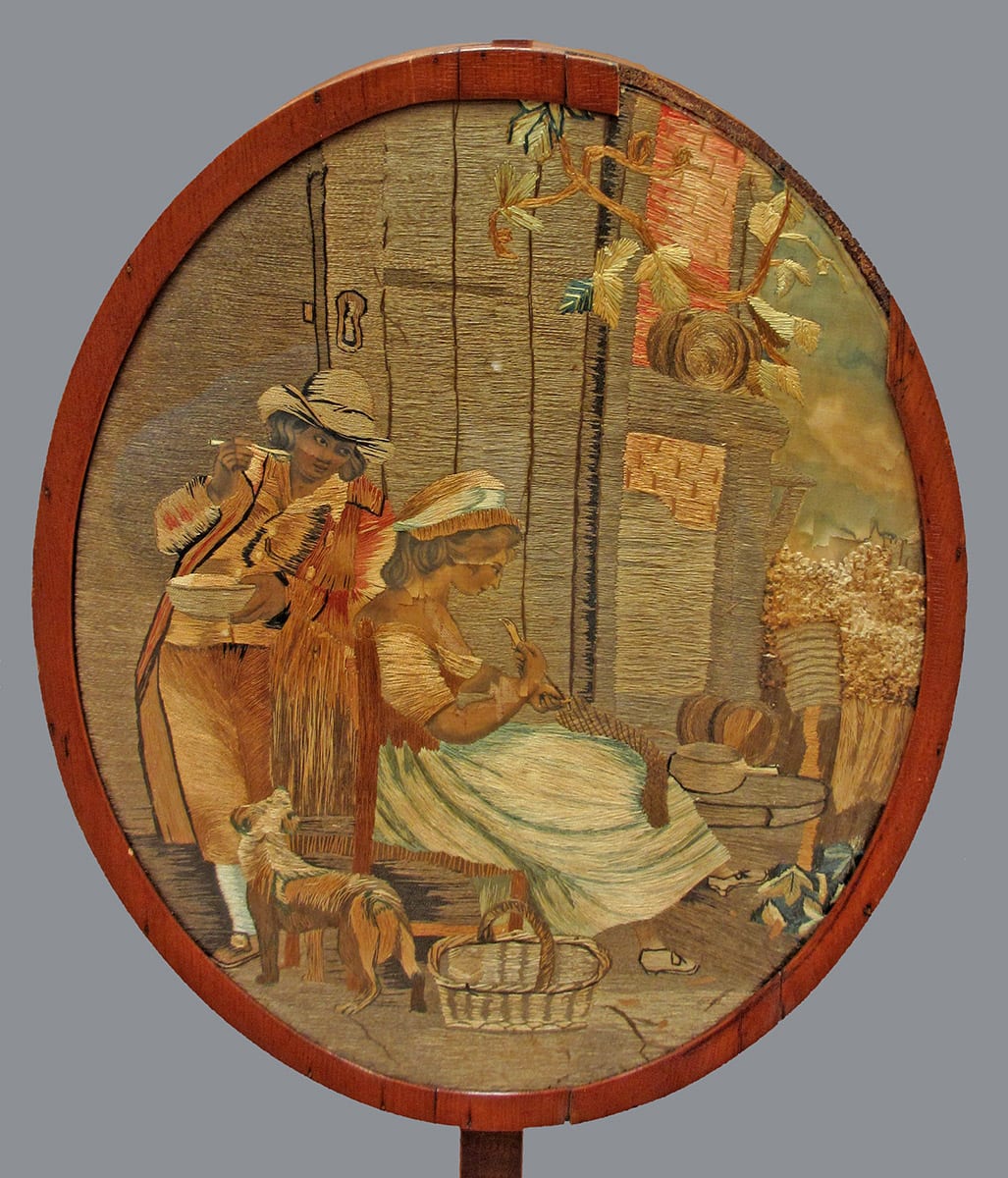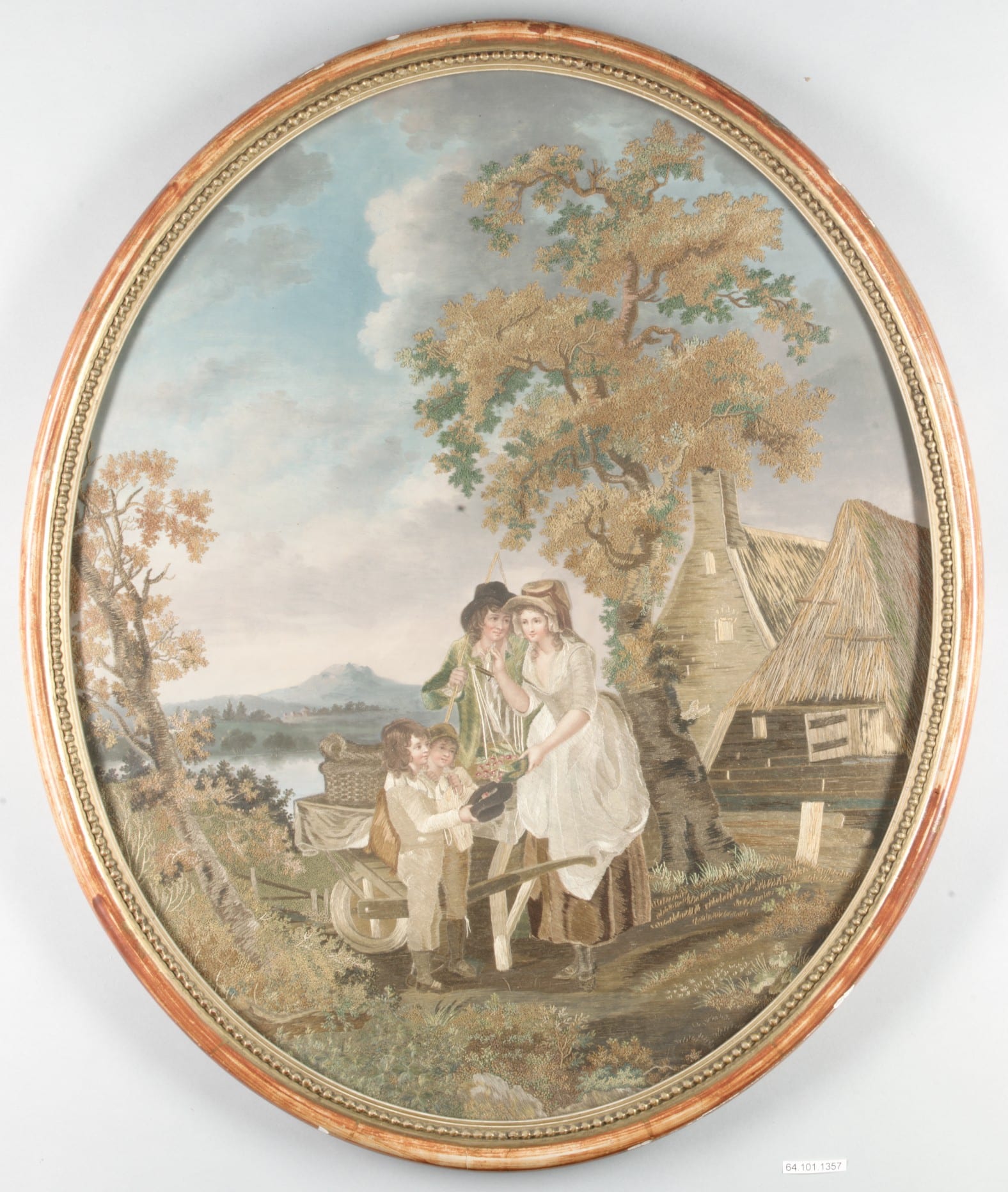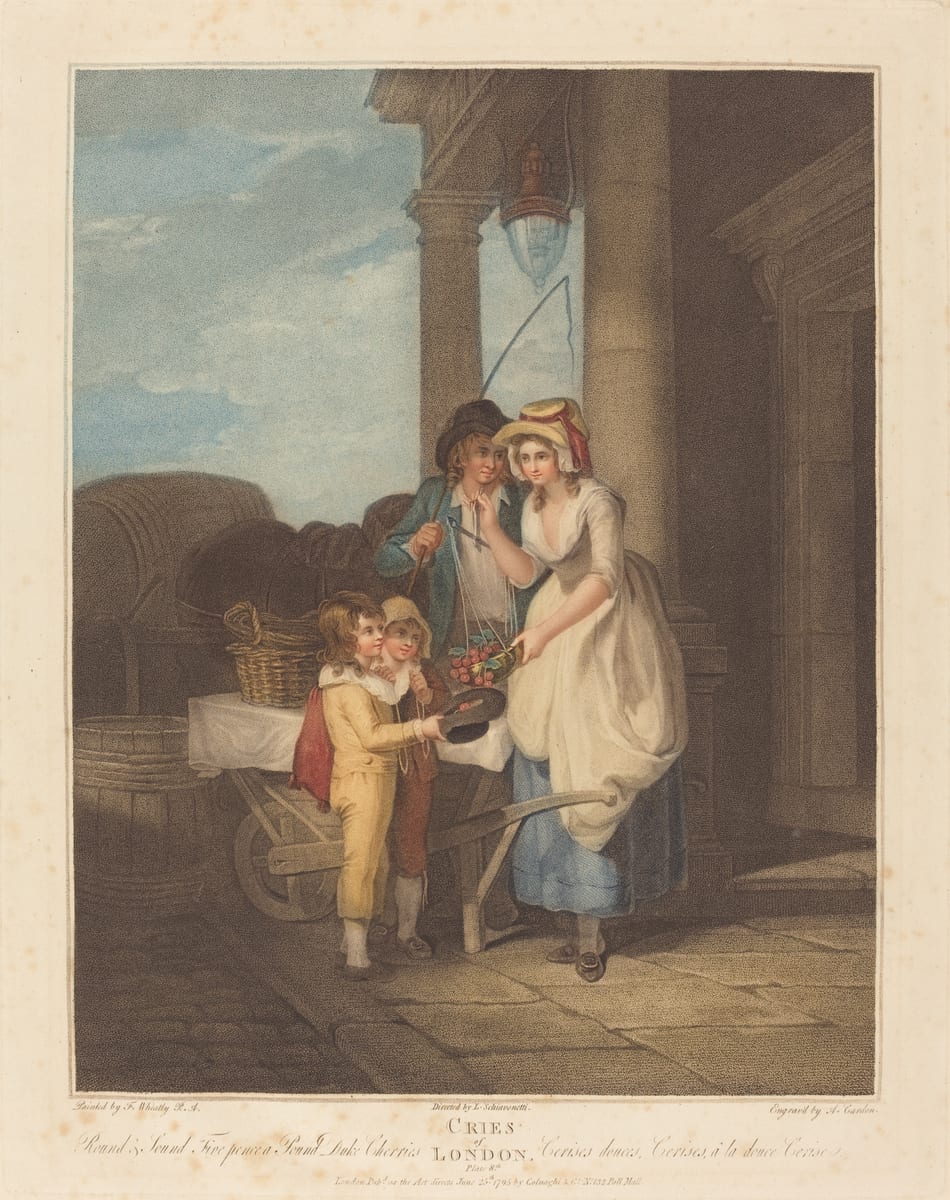The Industrious Cottager: Salacious, or Simply Hard at Work?
By Olivia Armandroff, WPAMC Class of 2020
When I was first introduced to pole screens, I saw them as objects of luxury, not unlike William Hogarth who included one to the far right in his 1742 scene, Taste in High Life (Fig. 1). The delicate furnishings certainly belonged in an elegant parlor where they would be positioned between the face and a raging fireplace, not only offering relief from the heat but protecting make-up which was liable to melt. The pole screens I had seen in the past were embellished with colorfully patterned designs or fine floral compositions that suited the aesthetics of their rooms’ other trappings, and Hogarth shows a pole screen depicting a sedan chair, another luxury object. The imagery on this pole screen in the Winterthur collection caught my attention: a rustic cottage scene (Fig. 2). Wouldn’t the rough wood of the door and barrels and the untended vines in the embroidered scene have be a startling contrast to the accouterments of the refined sitting room it was set in?

Fig. 1: William Hogarth, A Taste in High Life, 1746, etching, The Forster Bequest, The Victoria and Albert Museum, F.118.129.
As I began to investigate other pole screens that featured narrative scenes, something that became especially popular at the end of the eighteenth century when this pole screen was made, I discovered pastoral subjects abounded. Francis Wheatley, who had painted The Industrious Cottager, the model for this embroidery, was a popular source for imagery at the time. He had many other sentimental countryside scenes in his repertoire, but his most popular series—The Cries of London—was adapted for an embroidery in the Metropolitan Museum of Art’s collection (Fig. 3 and 4). It seems Wheatley’s image was edited so that it would be more appropriate for the young girl stitching it, for the London setting was transformed into a bucolic farmyard, shifting the focus away from the urban appetites for salesmanship and courtship and toward the pleasure of sharing fresh fruit. Rural life was invoked in embroideries to capture their makers’ innocence and wholesomeness, values young girls were expected to demonstrate in order to achieve matrimonial success.

Fig. 2: The Industrious Cottager, c. 1795, silk, linen, paint, wood, glass. Gift of Bastian family in memory of Marion Morehouse Cranston, Winterthur Museum, 2009.0051.003.

Fig. 3: Cherry Ripe, last quarter 18th century, silk, wool, chenille on silk. Gift of Irwin Untermyer, 1964, Metropolitan Museum of Art, 64.101.1357.
As I grappled with the fashion for featuring rustic subjects in the carefully curated environment of the sitting room, I discovered Wheatley’s personal biography had startling contrasts with his ostensibly virtuous subjects. Hounded by debt Wheatley secured a loan in 1779 from painter Benjamin West, one he would never repay, and escaped to Ireland with the wife of fellow artist John Alexander Gresse. His dubious morality forced me to look at his idyllic subjects anew. Both the industrious cottager and the cherry vendor are subjects of the male gaze. Whether the scenes show a flirtatious encounter or unwanted attention, they are far from demonstrating the moral virtues that were supposed to guide the selection of subjects for a young female embroiderer. Wheatley’s personal story shows he was an expert in the subject of desire. And that subject of desire was a fitting topic for an elite parlor, as Hogarth’s print reminds us. Perhaps Wheatley’s ability to couch such forbidden themes beneath the pretext of rural life was what made him such a popular source for elite female embroiderers.

Fig. 4: Anthony Cardon, after Francis Wheatley, Round and Sound, Five Pence a Pound, Duke Cherries, 1795, colored stipple engraving. The Rosenwald Collection, National Gallery of Art, 1945.5.3.
Could Elizabeth Wood, the ten-year-old maker of The Industrious Cottager, or whoever selected her subject, have been aware of Wheatley’s personal story? Would she have perceived the underlying implications of the girl and boy’s interaction? Did she see in the industrious cottager a mutually shared desire to find love?

Leave a Reply